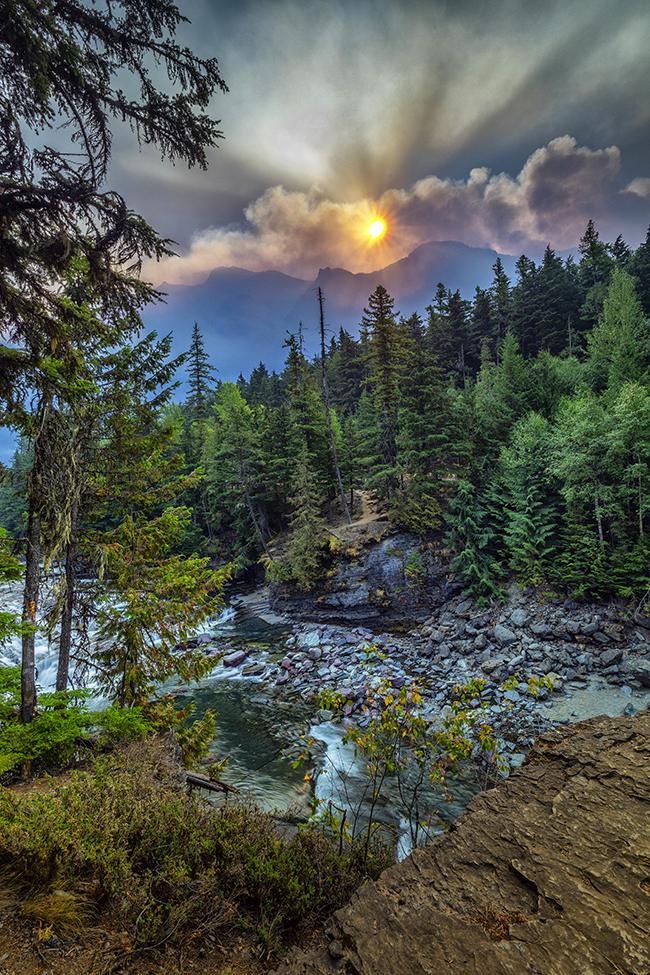
Crepuscular rays and a smoky morning at McDonald Creek, Glacier National Park / Rebecca Latson
Chances are, during a national park visit, you’ve probably photographed – intentionally or accidentally – an interesting event involving the play of light known as an atmospheric phenomenon. This manifestation may show up as the subject of your composition, or perhaps as an accessory highlighting your subject.
What, exactly, is an atmospheric phenomenon? According to Wikipedia, atmospheric phenomena “are any observable events [created] due to the interaction of light from the sun or moon with the atmosphere, clouds, water, dust, and other particulates.” Some of these “observable events” are quite familiar to us (rainbows, northern lights), while others you might not have heard very often (Belt of Venus). Let’s take a look at some of these atmospheric phenomena and how you might photograph them.
Crepuscular Rays
Known as “God rays” or sunbeams, these shafts of light radiate from the sun just before or after sunset or sunrise. While these sunbeams look like they are fanning outward from the sun, they are actually parallel to each other. Sunlight shines through gaps in clouds and continues through an atmosphere filled with dust or other particles (like wildfire smoke) to create these beams.
The image above was photographed along McDonald Creek during a very smoky late summer at Glacier National Park a few years ago, as the Sprague Fire raged in the western portion of the park. All the ingredients were present for the creation of the crepuscular rays seen in the photo: sunlight, gaps in the clouds, and a smoke-filled atmosphere.
Anticrepuscular Rays
Anticrepuscular rays are similar to crepuscular rays, except their point of convergence is a point opposite the sun called the “anti-solar point.” Anticrepuscular rays appear to fan out from that point toward the sun, rather than away from it.
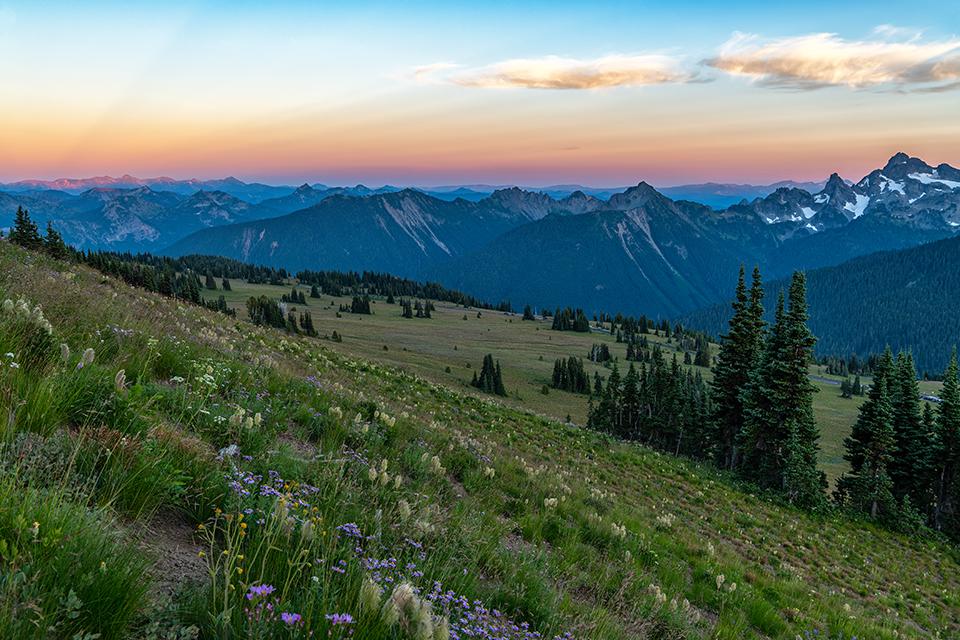
Anticrepuscular rays, Mount Rainier National Park / Rebecca Latson
One late summer evening, standing on Sourdough Ridge Trail in the Sunrise area Mount Rainier National Park while waiting for the night sky to descend over “The Mountain,” I swiveled my camera and tripod to the view behind me to capture a scene decorated by anticrepuscular rays.
Crepuscular and anticrepuscular rays may either appear quite definite, or barely discernable. A circular polarizer (CPL) or graduated neutral density filter (grad ND) are both helpful at creating a little more texture to define those "opposite" sunbeams.
Belt of Venus
I’ve photographed the Belt of Venus plenty of times but never knew the name until just recently. Also called Venus’s Girdle or the anti-twilight arch, the Belt of Venus appears as a pink band across the length of the horizon just after sunset or before sunrise, with a bit of darker blue (the earth’s shadow) beneath the pink. The blog site auroralabsnorway.com has a more detailed explanation of this particular atmospheric phenomenon if you want more specifics.
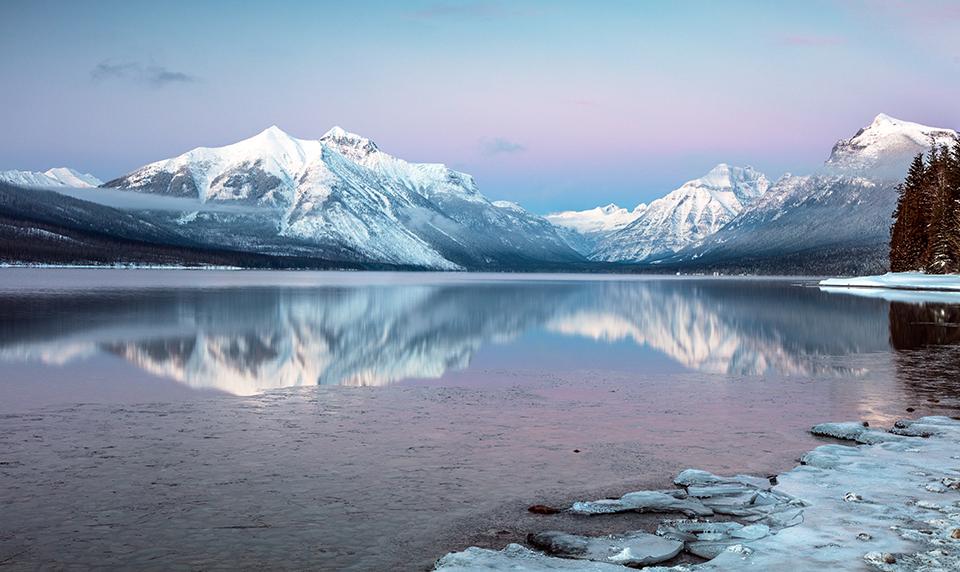
The Belt of Venus on a cold winter evening, Glacier National Park / Rebecca Latson
A CPL works nicely to saturate the Belt of Venus as seen in this photo I took a few years ago during a very cold winter evening just after sunset at Lake McDonald in Glacier National Park.
Alpenglow
Alpenglow is that rosy light you see capping the tips of mountains before sunrise or after sunset. Alpenglow is an excellent reason to stake out and set up your camera and tripod at least 30 minutes prior to sunrise, or stick around 15 - 20 minutes longer after photographing sunset.

Alpenglow and faint anticrepuscular rays over Lake Mcdonald, Glacier National Park / Rebecca Latson
This is the same scene at Lake McDonald as the photo above for the Belt of Venus example, except it was taken about 20 minutes earlier than the Belt of Venus image. Goes to show why you should always stay in the same spot just a little bit longer to see how the light plays out over a landscape. Look a little closer at this image and you can also see some faint anticrepuscular rays (sunset was to the left of the image).
Because alpenglow lightens up those parts of an image on which it shines, you’ll need to adjust your camera settings to keep from overexposing those brighter areas. And, since alpenglow is already relatively saturated, a CPL may be all you need to further accentuate that color and definition.
Rainbow
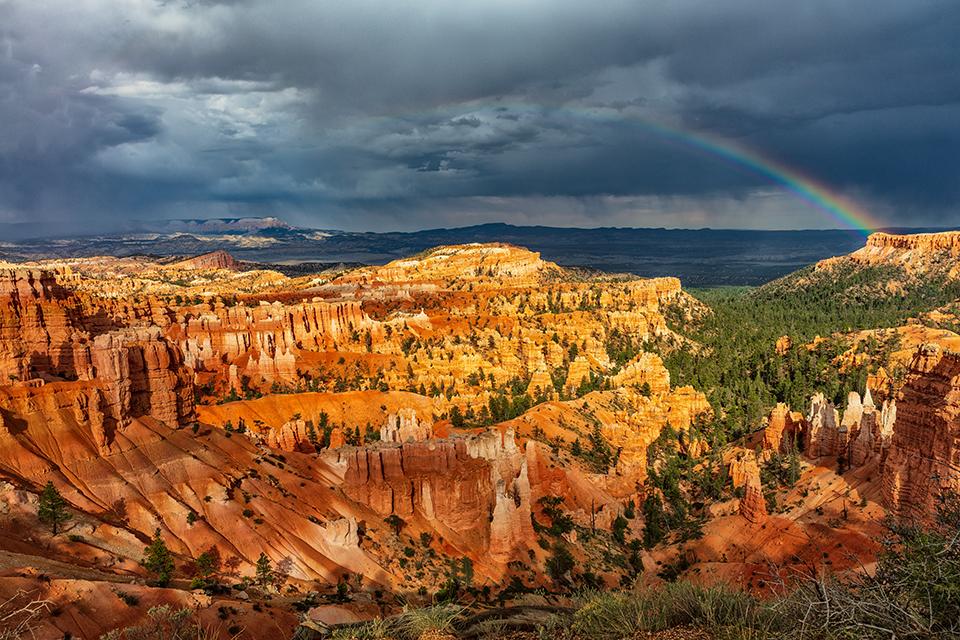
Monsoon rains and rainbow over Bryce Amphitheater, Bryce Canyon National Park / Rebecca Latson
If you ever visit a national park like Bryce Canyon or Grand Canyon during the summer, you’ll probably encounter at least one rainbow while watching a distant monsoon rainstorm. Sunlight is bent as it travels from air into the denser sheets of water droplets falling from the clouds, much like a beam of light traveling from air into and through a prism. This change in density separates the light into individual wavelengths, each of a particular color, to produce the series we know via the acronym ROYGBIV. Circular polarizers attached to your camera lens are great for intensifying those rainbow colors and adding more texture to rainclouds.

Rain and rainbow over the North Rim, Grand Canyon National Park / Rebecca Latson
Sun Halo

Sun halo and Painted Hills landscape, John Day Fossil Beds National Monument / Rebecca Latson
According to weather.gov, a sun halo is “a ring or light that forms around the sun or moon as the sun or moonlight refracts off ice crystals present in a thin veil of cirrus clouds. The halo is usually seen as a bright, white ring although sometimes it can have color.” CPLs or grad NDs both bring out the quality of light and definition to a sun halo, not to mention toning down the overbright highlights one often gets when photographing this particular phenomenon. A CPL was affixed to my camera’s lens for the shot above, taken on a chilly gray morning while hiking the Carroll Rim Trail in the Painted Hills Unit of John Day Fossil Beds National Monument in Oregon.
Unfortunately, I can’t say I’ve photographed (yet) every example of an atmospheric phenomenon. They are on my bucket list. Maybe I’ll photograph them and others someday, but in the meantime, here are a few examples captured by other photographers.
Northern Lights

The northern lights, Denali National Park and Preserve / NPS - Jacob W. Frank
Now this is definitely on my photographic bucket list! Also known as the aurora borealis, these undulating waves of green, red, yellow and violet light occur due to charged particles from the sun colliding at extreme speeds via what is known as the solar wind with gaseous particles in the earth’s atmosphere and directed toward the North and South Poles due to earth’s magnetic field. Space.com has a more detailed explanation of this phenomenon and Capture the Atlas blog site has a great post with gorgeous photos explaining how to photograph the northern lights.
Moonbow

A Yosemite Falls moonbow, Yosemite National Park / Steve Wilson via Pixabay
How many of you have visited Yosemite National Park and stayed up late to photograph the “moonbow” arching over Yosemite Falls or some other misty waterfall in that park? I was hoping to do that myself during my late August 2021 visit, but at that time of year every waterfall in the park vicinity was bone dry.
A moonbow works on the same principal as a rainbow: light – in this case, moonlight rather than sunlight - bends as it enters the denser medium of waterfall mist then separates into colored wavelengths.
Because you’ll be photographing a moonbow scene lit only by the full or nearly-full moon, you’ll need to use a tripod. This will allow the use of much slower shutter speeds and a wider lens aperture – both to allow as much light as possible onto your camera’s sensor. You’ll also want to use either a wireless shutter remote, or your camera’s 2-second delay timer to prevent camera shake blur caused by your finger pressing down on the shutter button.
Sun Dog

Sun dog over the Grand Canyon of the Yellowstone, Yellowstone National Park / NPS - Jacob W. Frank
Weather.gov writes “sundogs are colored spots of light that develop due to the refraction of light through ice crystals. They are located approximately 22 degrees either left, right, or both from the sun, depending on where the ice crystals are present. The colors usually go from red closest to the sun, out to blue on the outside of the sundog. Sundogs are also known as mock suns or parhelia (‘with the sun’).”
Atmospheric phenomena are unique occurrences that can make your national park photo into something really special. While you can’t necessarily plan ahead for their incorporation into your composition as you can for, say, a sunset, sunrise, or night full of stars, you do now know how to identify these distinctive combinations of light and atmosphere and how to make the most out of their appearance.
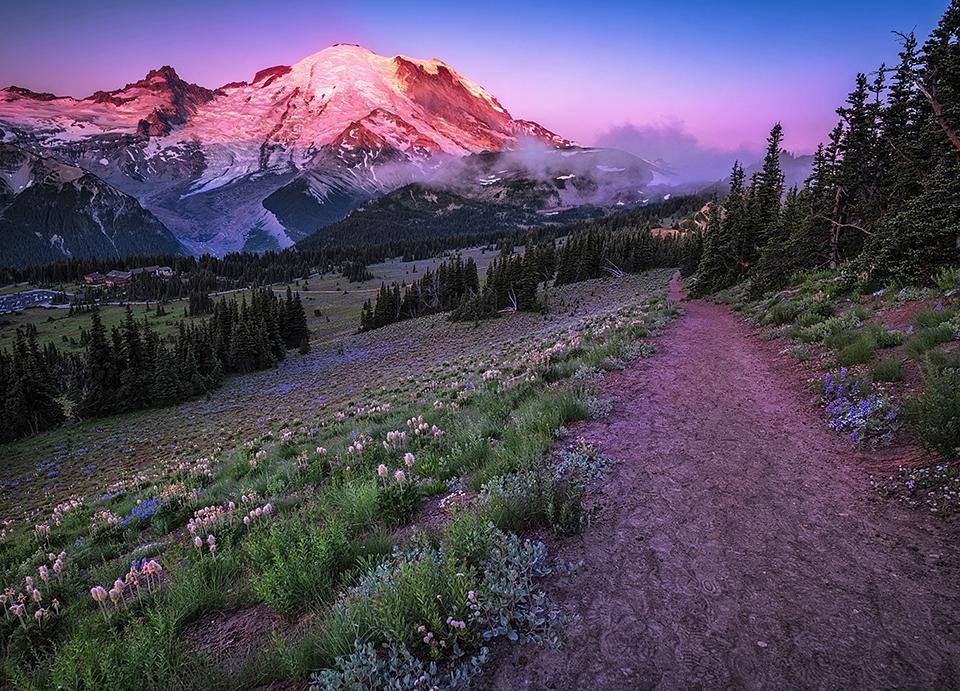
Morning alpenglow over "The Mountain," Mount Rainier National Park / Rebecca Latson

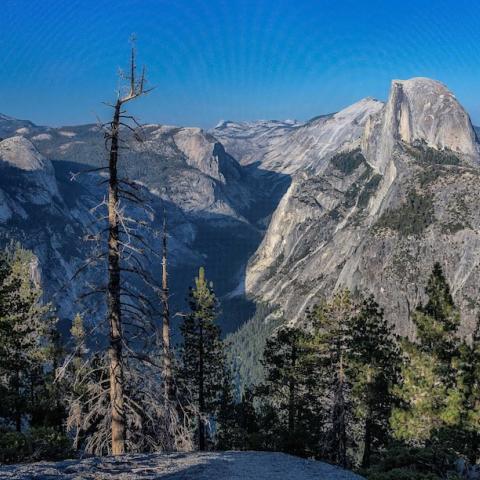


 Support Essential Coverage of Essential Places
Support Essential Coverage of Essential Places






